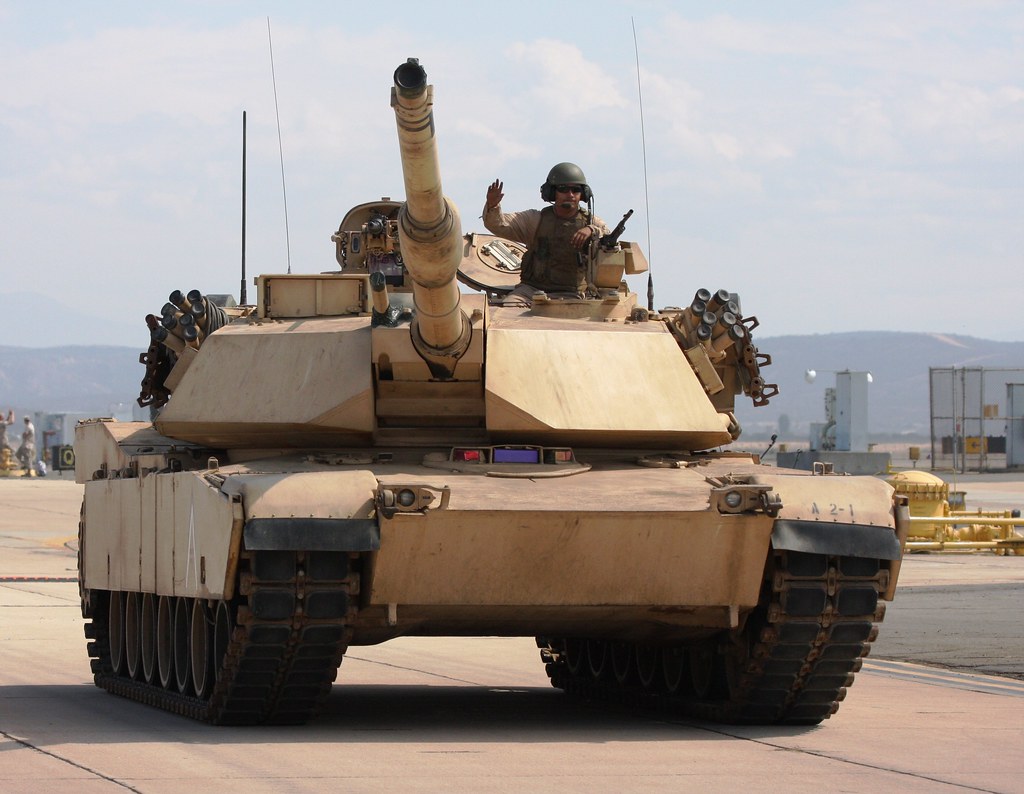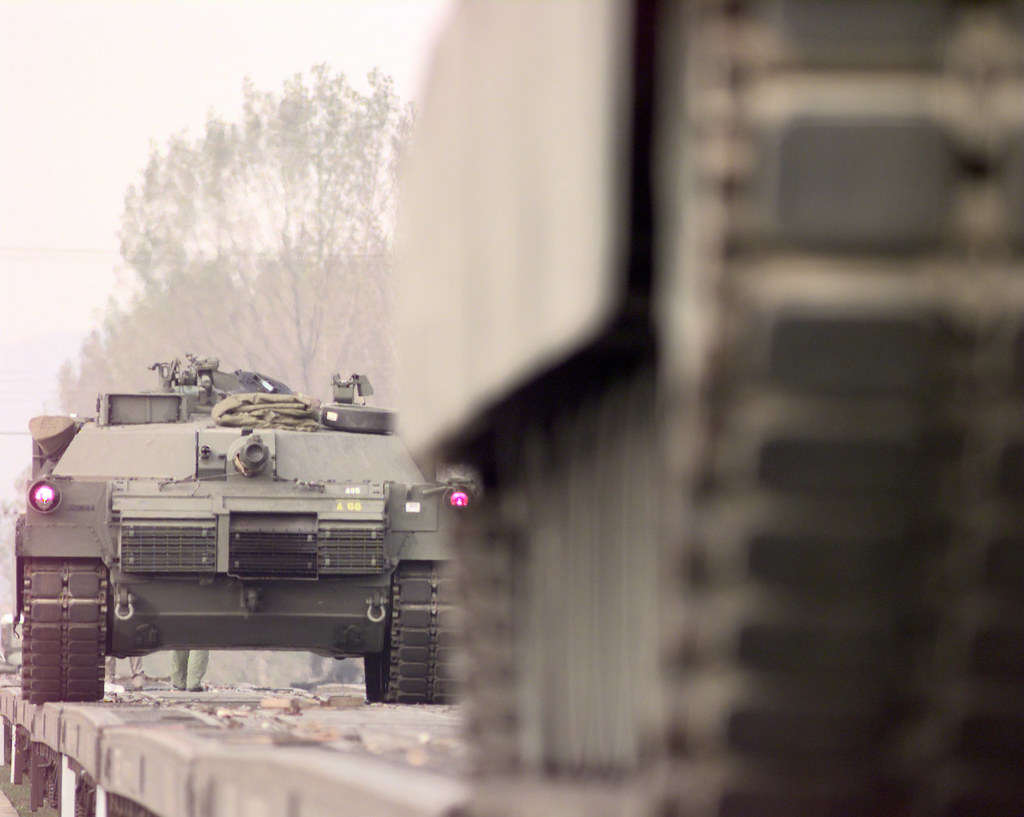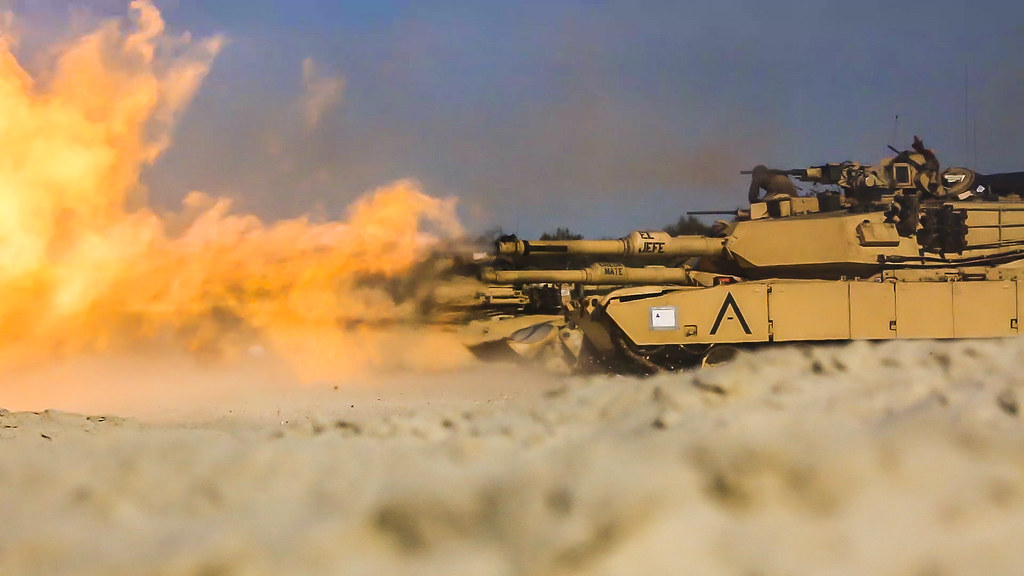
The recent deployment of US M1A1 Abrams tanks to Ukraine, hailed as a game-changer, has turned into a stark revelation of the vulnerability of NATO’s armored capabilities.

With Russia’s successful targeting of these tanks using surveillance and hunter-killer drones, concerns have been raised about the security of NATO’s borders and the effectiveness of current armored warfare tactics.

The Abrams tanks, which each cost roughly $10 million, were introduced to the battlefield with the expectation of enhancing Ukraine’s offensive power against Russian forces.

However, within two months of their introduction, a significant drawback was exposed. Russia’s adept use of drone technology has not only nullified the tanks’ advantage but has resulted in the destruction of five of the initial batch of 31 tanks delivered.

This swift adaptation by Russia to the modern battlefield, where surveillance and hunter-killer drones have become a critical component, signals a distressing predicament for NATO.

“If Russia has found critical vulnerabilities in our armor, our borders are beginning to look very vulnerable,” a sobering sentiment that underscores the gravity of the situation.

The Abrams tanks provided to Ukraine were not the latest models, lacking some of the features that enhance their durability. This was a calculated move to prevent cutting-edge technology from potentially falling into Russian hands.

Nevertheless, the intended role of the tank—characterized by firepower, protection, and mobility—remains unfulfilled when faced with new warfare tactics.

Ukrainian forces appear to be deploying the tanks as static pillboxes, which greatly compromises their maneuverability, leaving them susceptible to drone attacks.

This strategy directly contradicts the concept of Blitzkrieg, where rapid movement and overwhelming firepower play a crucial role. The crux of the problem may lie in the outdated defensive measures of even the most modern Western tanks, which were conceived before drones became a serious battlefield threat.

The rise of low-cost drones challenging multi-million dollar tanks reveals a gap in defense strategies that demands urgent attention and resource allocation.

Several interim solutions have been proposed, such as the fitting of metal cages and explosive armor to the tanks’ roofs to counter the drone threat. More futuristic defenses include systems like the British DragonFire laser, which has demonstrated promising results in neutralizing drones.

Until such advancements become widespread, however, Ukraine must shift towards a maneuver-focused warfare strategy that integrates air power, artillery, and infantry alongside armored units to effectively counter Russian forces.

There is a glimmer of hope, as new long-range missile systems provided by the US and the anticipated arrival of F-16 fighters may offer Ukrainian forces the upper hand, allowing for a more dynamic use of armored units. As the season changes, the grounds dry, and supply lines strengthen, the potential for a renewed armored offensive looms.

The current scenario in Ukraine serves as a stark reminder that warfare is in constant evolution. Today’s dominant force can quickly become tomorrow’s Achilles’ heel, and staying ahead requires a relentless pursuit of adaptation and innovation. For NATO, the challenge now is to transform this vulnerability into an opportunity for defense modernization that will secure its armored might for the future.

